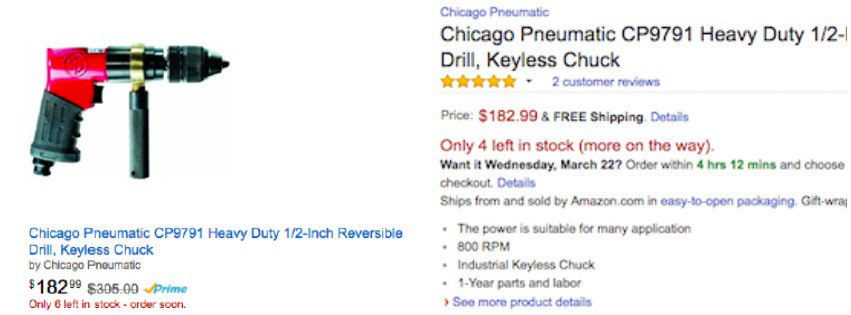Report Claims Amazon’s List Prices Mislead Shoppers About Discounts Image courtesy of Akira Ohgaki
One aspect of shopping on Amazon is that the online retail giant appears to offer significant discounts on many of the items it sells. However, a new report alleges that these markdowns not as generous as they appear, and that many of them are effectively nonexistent.
In fact, according to the report [PDF] commissioned by Consumer Watchdog, nearly 40% of the 4,000 Amazon products looked at used reference or list prices that are not charged by other retailers.
Federal regulations require that reference prices reflect prevailing market prices; retailers can not simply cherry-pick the highest competitor’s price.
While Amazon’s Conditions of Use states that a product’s list price “represents the full retail price listed on the product itself, suggested by the manufacturer or supplier, or estimated in accordance with standard industry practice,” the report’s findings suggest that isn’t always the case.
Of the products examined, the researchers claim that more than a quarter of the items contained reference or list prices that exceeded any plausible definition of “prevailing market price.”
The report also provided specific example’s of Amazon’s allegedly problematic list prices. For example, a Pneumatic brand drill advertised on Amazon contained a list price of $305 and an actual price of $182.99, representing a 40% discount.
However, the researchers found that other retailers selling the same drill at a price comparable to the supposed sale price: Jet.com sold the drill for the same $182.99, while Walmart charged $189.99.
A more recent look at Amazon found that the drill’s listing no longer contains the crossed out list price.
In another example, the report found that an Acer laptop had a list price of $799 (on sale for $718), while Acer listed the product price at $749. Additionally, a Google Shopping search conducted by researchers found that not one of the 125 online stores that carried the laptop sold it for $799.
Because Amazon does not specify how it comes up with list prices and the definition of prevailing market price could apply to the average, mean, or most common prices for the products on the market, the researcher examined each figure.
When it came to average prices, the report found that 71% of the products examined in the study were more expensive than the list prices of competitor’s sales. In some cases the difference was significant, the report found, as Amazon’s reference price was an average of $18.88 higher than market mean.
As for median — or middle — prices, researchers found that 74% of the product contained prices that were greater than the median cost offered by competitor. In fact, on average, the report found that Amazon’s reference prices overstate the median market prices by $22 or about 20%.
Researchers also investigated how Amazon’s prices stacked up against the most used prices of other competitors. In this respect, 50% of Amazon’s reference prices exceed the most common price charged by rivals. The average difference between Amazon’s list price and the most used prices by competitors was about $4.
“In other words, the reference prices were an entirely bogus notional price that created the false impression that customers were getting a deal when they were not,” Consumer Watchdog said in a statement Monday.
We’ve reached out to Amazon about Consumer Watchdog’s findings and the request for California to investigate the pricing practices. We’ll update this post when we hear back.
UPDATE: Amazon has sent the following statement to Consumerist, which we are publishing in its entirety —
“The Consumer Watchdog report is misleading. Manufacturers, vendors and sellers provide list prices, but our customers care about how the price they are paying compares to other retailers. We validate list prices against actual prices recently found across Amazon and other retailers, and we eliminate List Price when we believe it isn’t relevant to our customers. Using recent price history of the product on Amazon we’ve also introduced a ‘Was’ price to provide customers with an alternative reference price when we don’t display List Price.”
Want more consumer news? Visit our parent organization, Consumer Reports, for the latest on scams, recalls, and other consumer issues.



